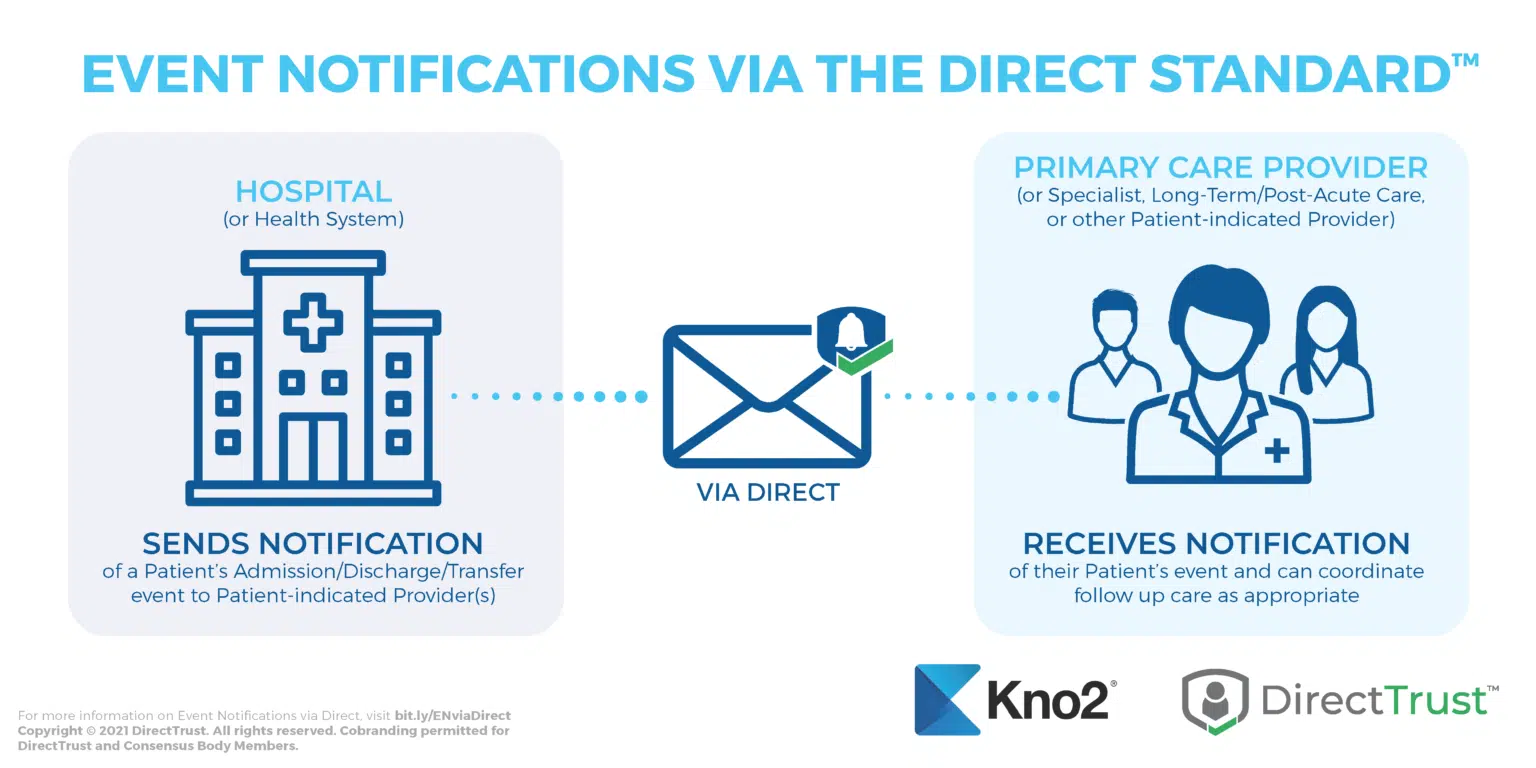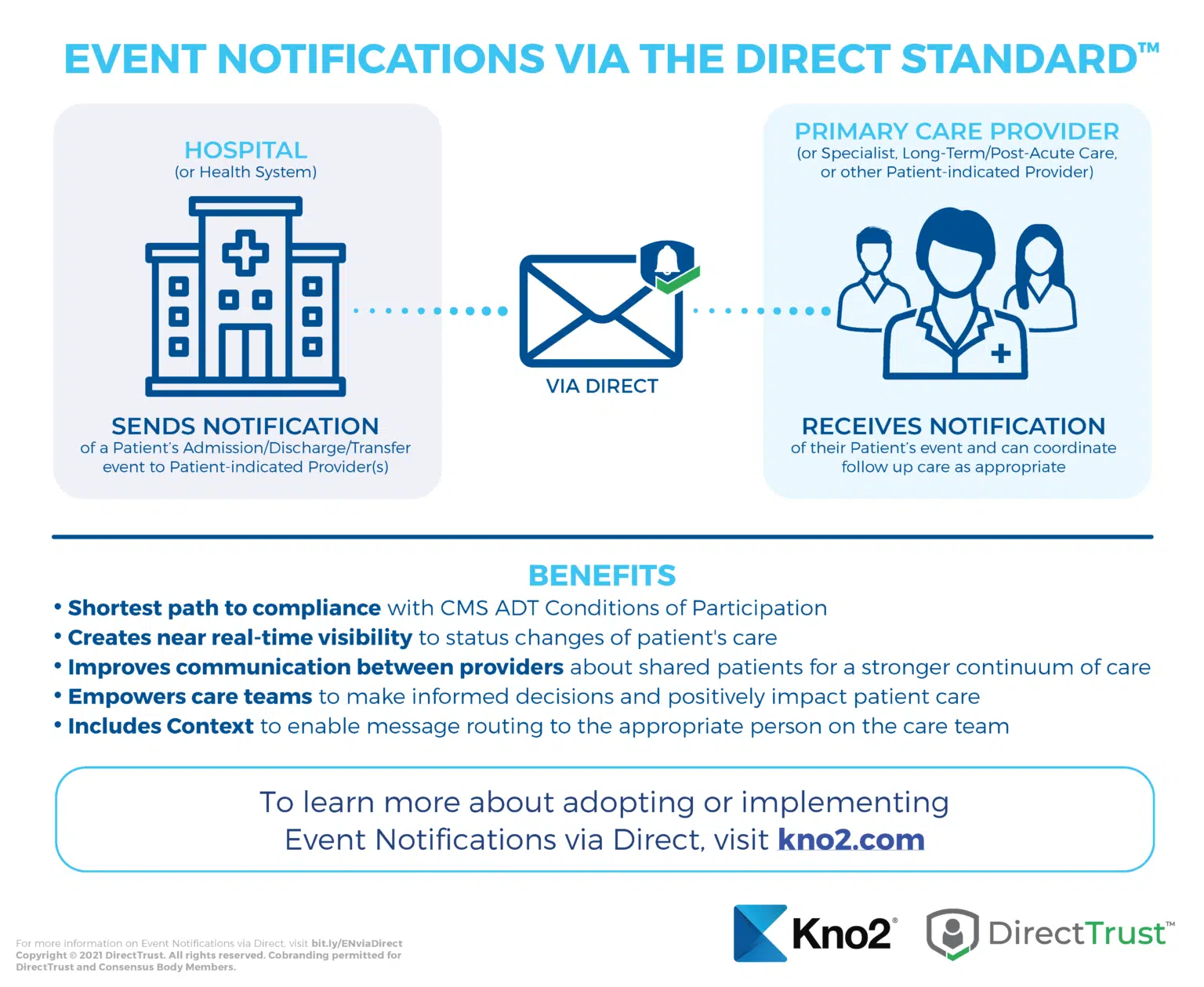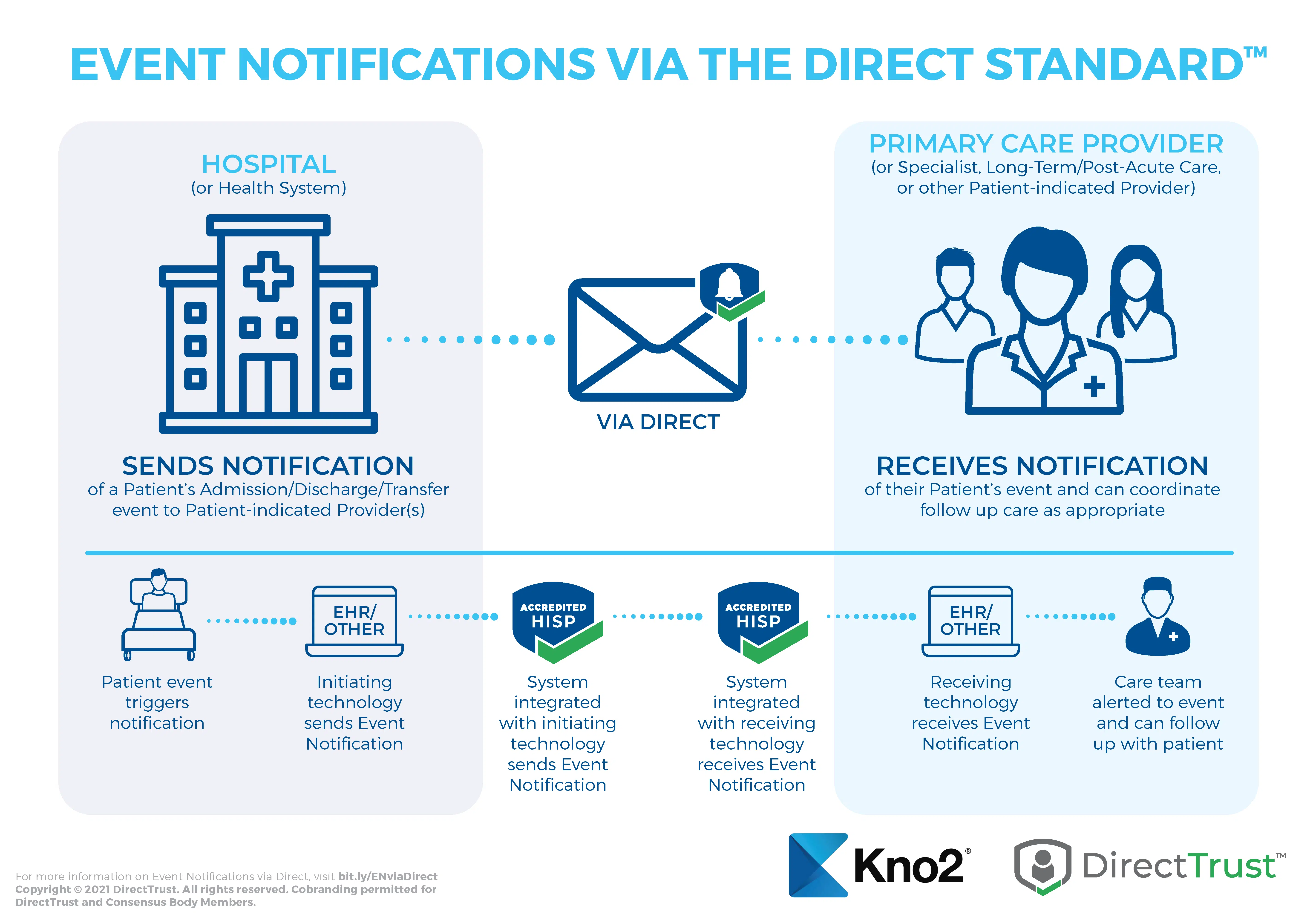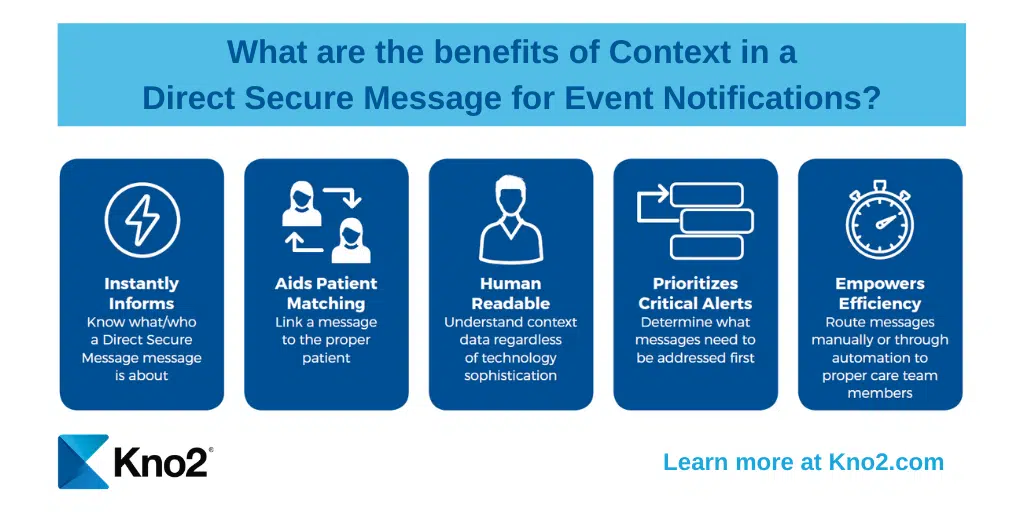
ADT Event Notifications
Bring power to your care coordination with the right information at the right time
What are ADT Notifications?
Admission/Discharge/or Transfer (ADT for short) notifications alert care teams to changes in patient status and care. The Centers for Medicare and Medicaid (CMS) are requiring hospitals to send these ADT notifications about mutual patients to primary care, post-acute, and other providers by May 1, 2021.

Why will providers benefit from ADT Notifications?
Notifications empower care teams with the right information at the right time! Gain visibility into real-time changes of your patient’s care. Know when they are being discharged from the hospital and into your care so you can make informed decisions and positively impact their care.
How do ADT Notifications work?
Event Notifications via the Direct Standard™ offers the shortest path to compliance with the CMS requirement because it leverages existing standards and technologies in place today. This means you’ll receive these ADT Notifications through Direct Secure Messaging. Just like how Direct works today, a hospital may look another organization’s Direct Address up in the directory, and send the secure and encrypted message through a trust network to the designated provider or care team.
What is Context?
Context provides information about the message, like what it is, who it’s about, and where it’s from. Context allows for care teams to prioritize which messages they address. Additionally, Context enables message routing to the right person on the care team for more efficient communication.
Event Notifications via the Direct Standard™
Check out this video series learn more about Event Notifications via the Direct Standard™. Identify the impact to your organization and how these alerts enable improved care coordination.kno2.com

Additional Resources
Fact Sheet
Benefits
What is Direct?
Learn more about how Kno2 is supporting ADT Event Notifications
About Kno2
Kno2 is empowering healthcare technology vendors to finally realize the potential of true interoperability by unleashing connectivity everywhere, bringing patients and caregivers together. Through simple to use APIs, industry disrupting economics and our passion to include the underserved, Kno2 is democratizing healthcare communications and is defining the new connected future of healthcare. To learn more visit kno2dev.wpengine.com
Contact
-
404 S. 8th Street, Suite 250
Boise, ID 83702 -
8925 E. Pima Center Parkway, Suite 100
Scottsdale, AZ 85258 - 1 (888) 390-6394
- support@kno2.com


